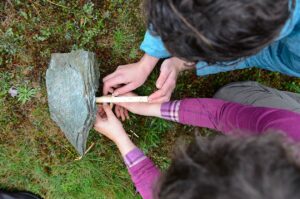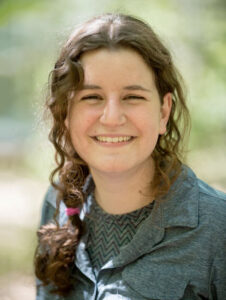
As a student adjusts to life in the woods at True North, the often begin to have discussions about “the real world” and what they do “in real life.” They talk about favorite music, movies, and other media. In particular, they tend to discuss their lives on social media: “What’s your Twitter handle?” “What’s your Insta?” “What’s your Finsta?” (a ‘Fake Instagram,’ typically reserved only for close friends). This is often their first route for peer connection, and reflective evidence of shared values and being in the same ‘club’: they use the same programs, understand the same social norms (to varying degrees), and even speak the same language (even if that language is filled with abbreviations, LOL).
While the explosion of social media over the past decade has clearly opened up new opportunities for connection, it has been followed by a wave of studies and articles regarding the dark side of these phenomena. Popular articles with titles such as, “Is Facebook making us more disconnected?” are easy to find. Further, numerous academic articles have been published demonstrating that there is clear evidence that while social media provides opportunities for a higher quantity of interactions, these connections tend toward a lower quality. There are lots of them, but they tend to be skin-deep at best. And it is the quality of our connections that we are most interested in the wilderness.

There are many reasons we at True North believe in the power of therapy done in the woods. We could all probably do wonderful work inside, and the air conditioning and running water would certainly be appreciated from time to time. However, living in the mountains provides an opportunity for serious, intense reflection that can’t be found elsewhere. As our students recognize that they cannot manipulate their external circumstances (one can’t argue away a thunderstorm, or lie to a chilly evening), they are given the opportunity to turn inward and develop internal resources for distress tolerance and resilience. Our primary focus in doing this kind of work is in creating new routes for connection with the people most important in their lives: their families. Human beings are inherently social beings, and this leads to our sense of identity – we develop a sense of ourselves through authentic expression and interaction with others.
Crucially important to this idea is the word authentic. When we show our real selves (strengths, weaknesses, hopes, fears, and all the rest), and someone else loves us, we feel worthy of being loved. We can learn to love ourselves. However, when we only show the shiny parts of ourselves and get praise, we tend not to believe that praise, and an inner sense of shame or self-doubt grows. Therein lies the difference between authentic connection and social media interactions: being liked for who we are leads to resilience and self-esteem. Someone hitting the “like” button on my picture might lead to good feelings for a moment, but it’s not about who I am. But that moment of good feelings creates a prime setup for excessive use and even addiction: a small “like” gives us a glimmer of connection, but the lack of depth and authenticity leaves us wanting more. Social media users (especially adolescents) tend to use it for self-promotion (“Look at the wonderful place I’m visiting” “…the wonderful food I’m eating!” “…the amazing people who I’m with!”). Consumers of the data who might doubt their own capacity for emotional fulfillment follow familiar patterns of comparison and self-doubt. Further, the separation of social media allows for brazen commentary and bullying that young people might not have tried in person. As a young person goes through the normal developmental struggles to learn social norms, tools for effective communication, and a sense of who they actually are, no wonder the fast changing, often aggressive opportunities for unrealistic comparison and shaming that exist with social media tend to be connected directly to anxiety.

The language of anxiety often starts with “If only…” “If only I was more like that person, I would be ok.” “If only I didn’t have to face this problem, I could be ok.” If only the past was different… If only I were smarter… If only I were more beautiful… If only I knew what to do… However, we see something happen in the wilderness: resilience emerges. Left behind are the virtual ‘likes,’ as they are replaced by authentic openness and being liked for who they are. Students are respected for their work and their kindness, rather than their ‘selfies’ or biting commentary. Gone are the days of filtered pictures as they are replaced by a new kind of picture – a complex understanding of one’s own abilities to survive and thrive in a difficult environment. Critically, once they get past the filters, excuses, behaviors, assumptions, and bad habits of the past and they dig down to understand who they really are and what they are capable of, they tend to like what they see. The ‘real world’ (that of an artificial, fleeting, and incomplete digital presence) is pushed aside as the student finds ‘the real me.’

Bo Bicknell, Course Leader, MSW


